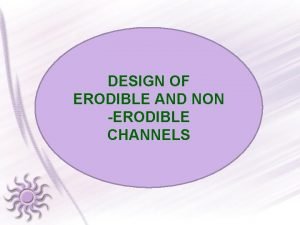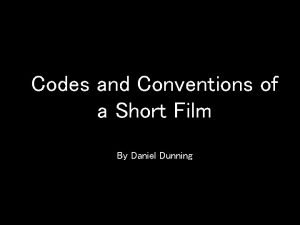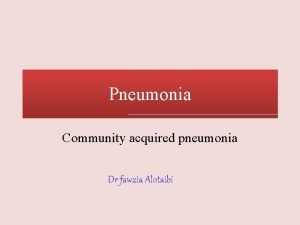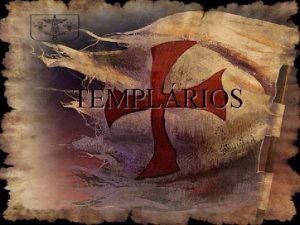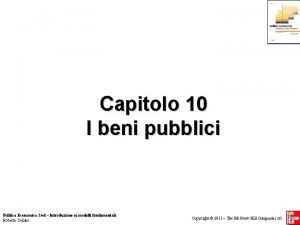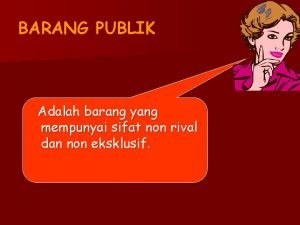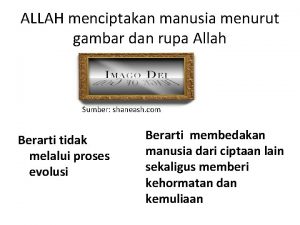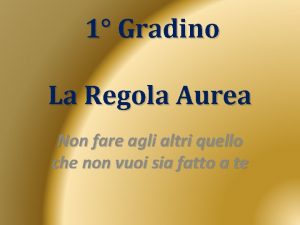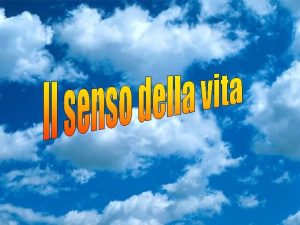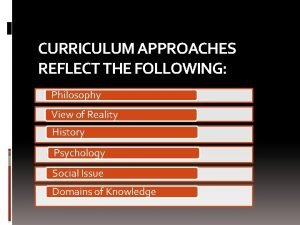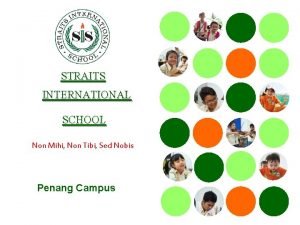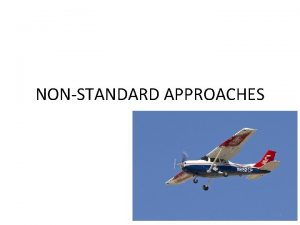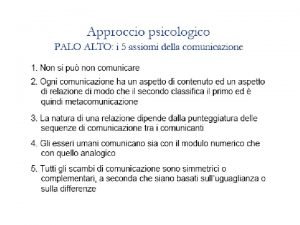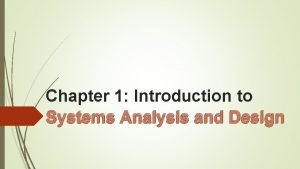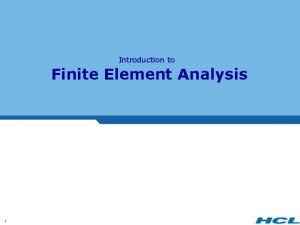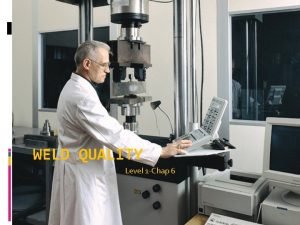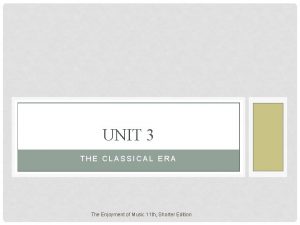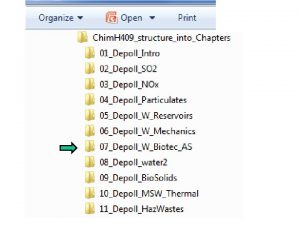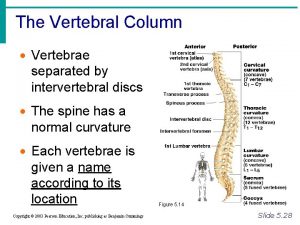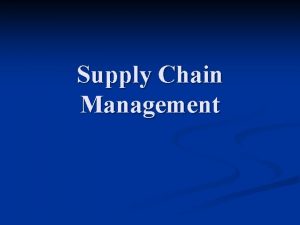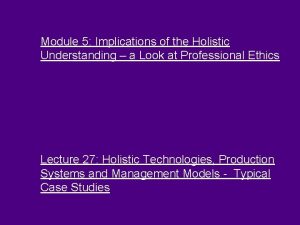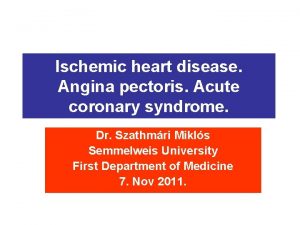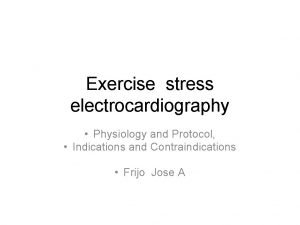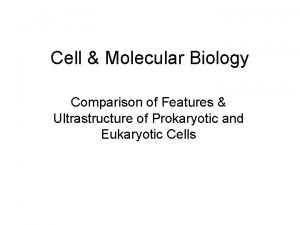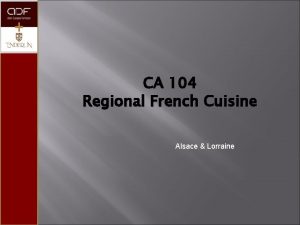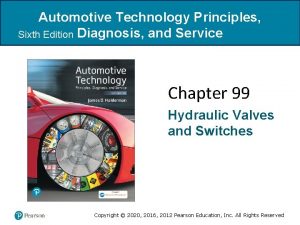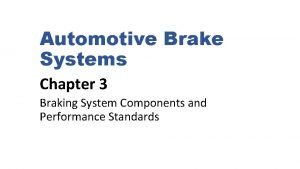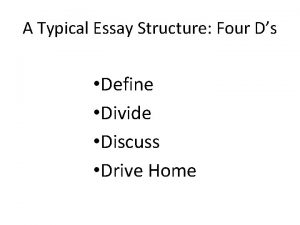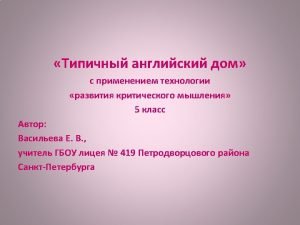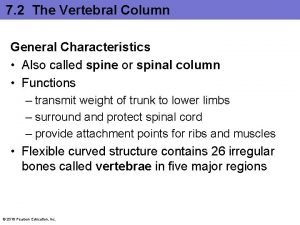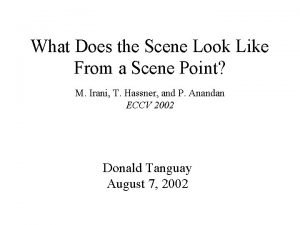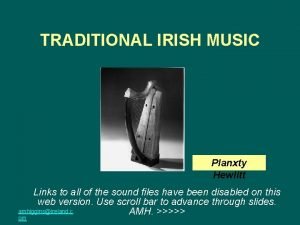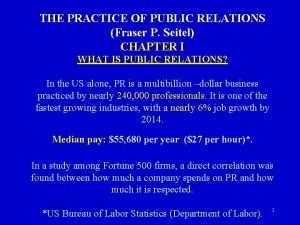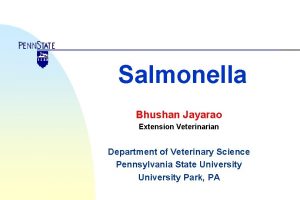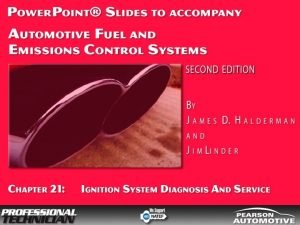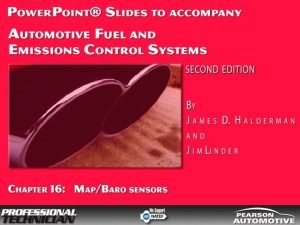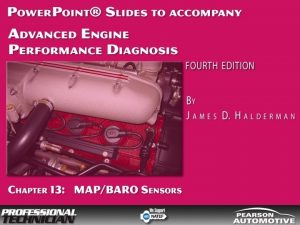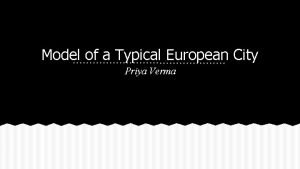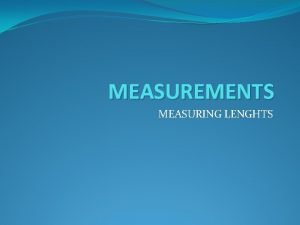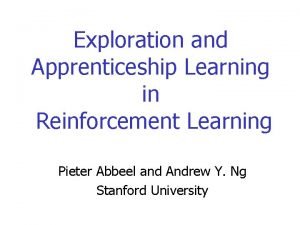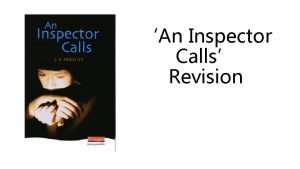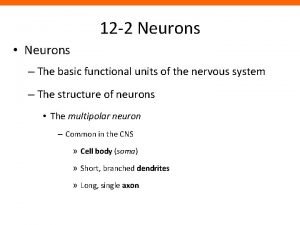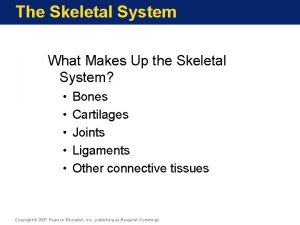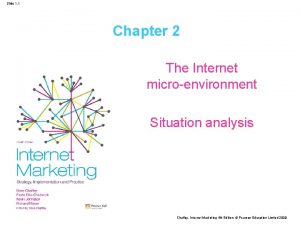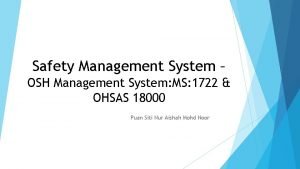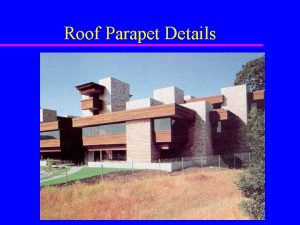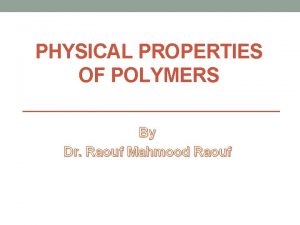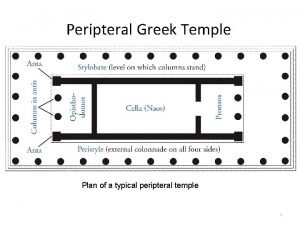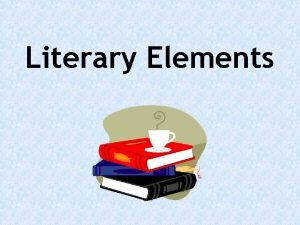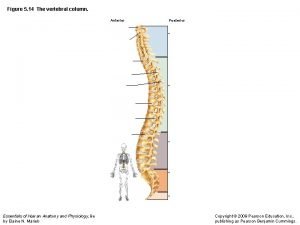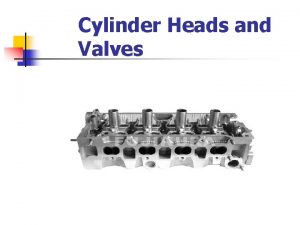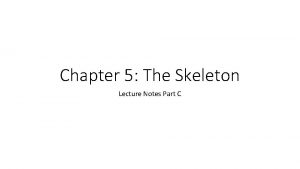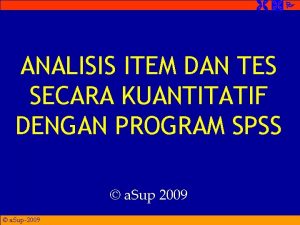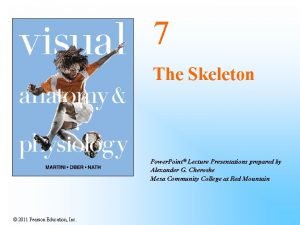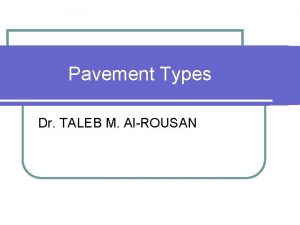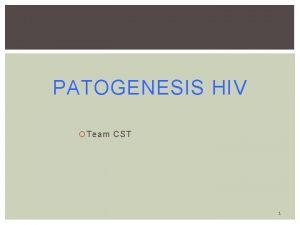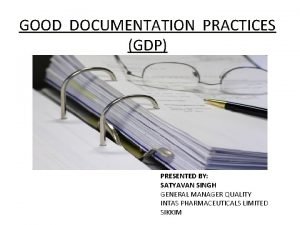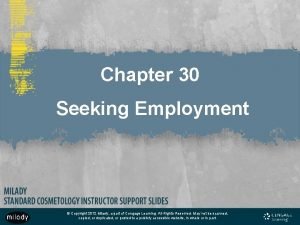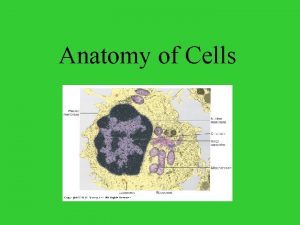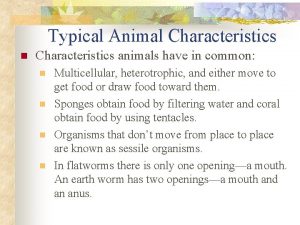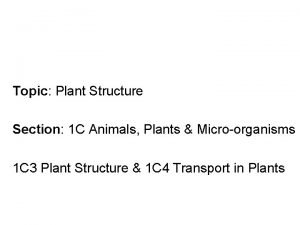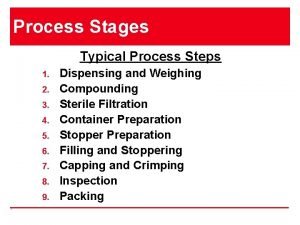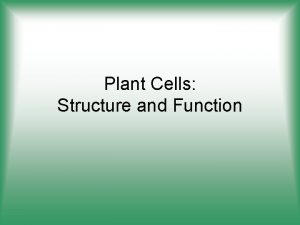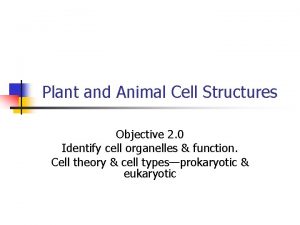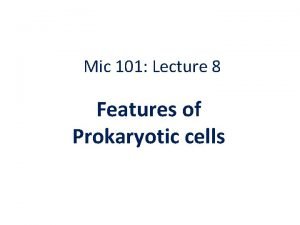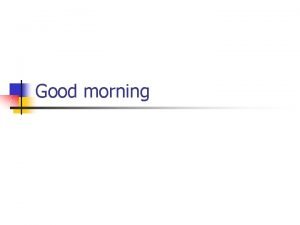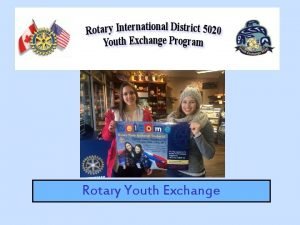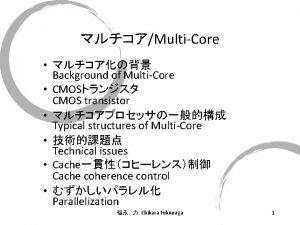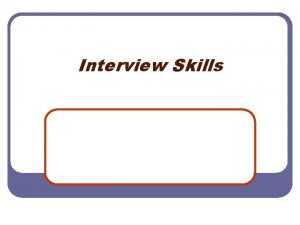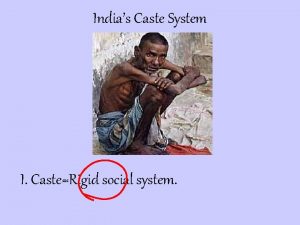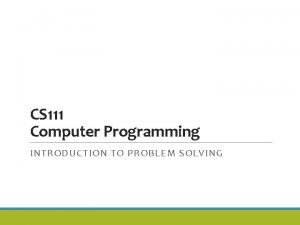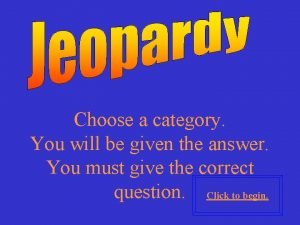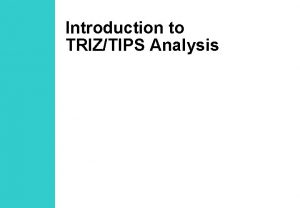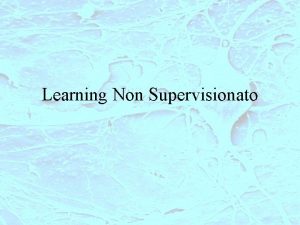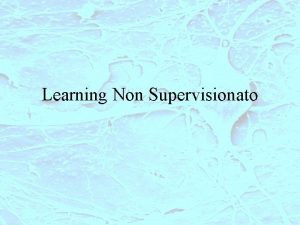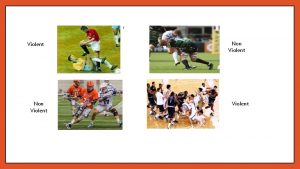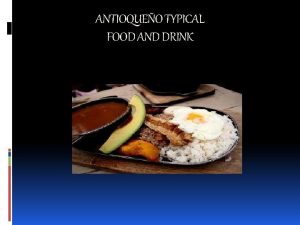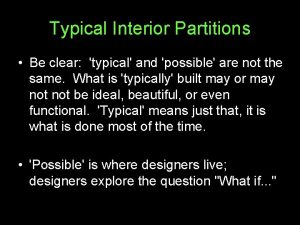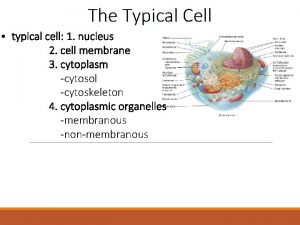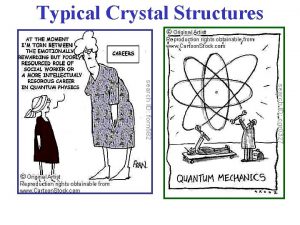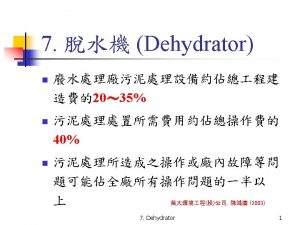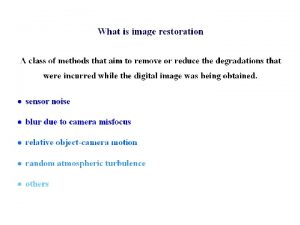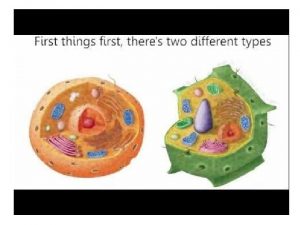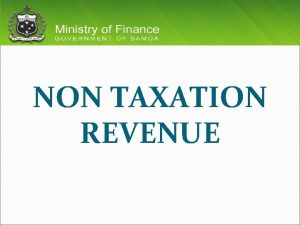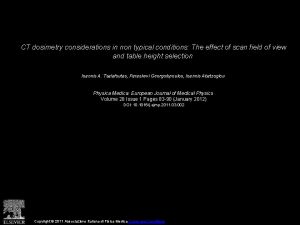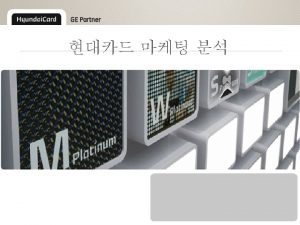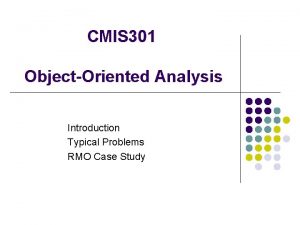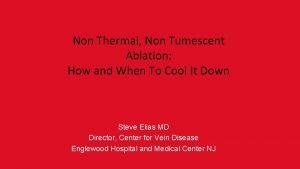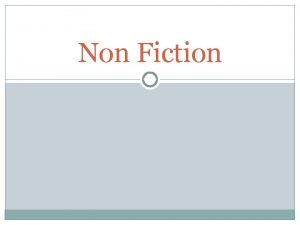Introduction to TRIZTIPS Analysis Typical and non typical


















![TRIZ 방법론 n TRIZ의 연구방법 ◎ 특허분석 150만 Patents [World Wide] Inventive Patents [40, TRIZ 방법론 n TRIZ의 연구방법 ◎ 특허분석 150만 Patents [World Wide] Inventive Patents [40,](https://slidetodoc.com/presentation_image_h2/f8b3a4b0208a3469a82ea5db8bb85f9d/image-19.jpg)


























































































![References u u u Altshuller [1984], Creativity As an Exact Science, Gordon and Breach References u u u Altshuller [1984], Creativity As an Exact Science, Gordon and Breach](https://slidetodoc.com/presentation_image_h2/f8b3a4b0208a3469a82ea5db8bb85f9d/image-110.jpg)
- Slides: 110

Introduction to TRIZ/TIPS Analysis



Typical and non typical problems u Typical problems from engineer viewpoint u u Typical problems from TRIZ viewpoint u u 지식을 통해 solutions이나 rules을 알고 있는 문제 경험을 통해 solutions이나 rules을 알고 있는 문제 동일 분야의 특허, EDB 등의 정보를 통해 알고 있는 문제 Engineer viewpoint에서 Non-Typical Problem을 포함 이러한 유형의 문제에 TRIZ는 Typical Solutions을 적용함 - 많은 발명가들의 경험으로부터 추출된 지식/원리/Rule 기술과제에 대한 Situation Modeling을 통해 Typical Problem으 로 변환할 수 있다. Non Typical problem u TRIZ의 typical solutions 이나 기존의 experience을 통해 이러한 유형의 문제를 해결할 수 없다.

Example 1. Step A. A thermometer for weevils Once scientist got together to discuss the problem about weevils. It was found that the conditions of existence of this small beetle had been studied very little. Nobody knew, for example, what the body temperature of weevils. "The weevil is very small", said one scientist. "You can not use regular thermometer". "We have to design special device, " agreed another scientist. "This will require a lot of time. " What should be done? 쌀벌레의 온도를 측정하는 기술을 모른다면 이 문제는 Non. Typical Problem 이다. H. Altov. And suddenly the Inventor Appeared 1989

Example 1. Step B. A thermometer for weevils Usually proposed solution as first idea, if we use trial and error approach. Real working idea: to collect a lot of weevils and put them into the glass. In this case we can use regular thermometer. Thermometer will indicate mean temperature of a weevil. 이 문제를 해결한 원리인 (Incorporation of similar or different objects into one system) 을 이용해서 다음 문제를 해결해 보자. H. Altov. And suddenly the Inventor Appeared 1989

Example 2. Step A. Glass filters A plant got an order to manufacture glass filters of one meter in diameter and two meters high. Holes were to be made evenly throughout the filter. Engineers looked at the drawings and were shocked: thousand of tiny holes had to be made in every filter. "How should we make these holes? " the chief engineer asked his subordinates. "Are we going drill them? " What should be done? Can we use principle Incorporation of similar or different objects into one system for this problem? H. Altov. And suddenly the Inventor Appeared 1989

Example 2. Step B. Glass filters Three ways of production Glass filter are presented after using Principle Incorporation of similar or different objects into one system H. Altov. And suddenly the Inventor Appeared 1989


How can we reduce psychological inertia? Solution Problem TRIZ stairs Psychological barrier u Psychological barrier Psychological inertia Solution u TRIZ gives us “stairs”


Non TRIZ ways Trial and error ways for inventive problem solving. The well-known techniques for psychological activation. For instance, brainstorming, morphological analysis, synectics. . .


기존의 문제해결 방법론 ants Vari Solution s nt ria Va Concept 4 Concept 3 Concept 2 ia ar s nt V Concept 1 Variants P . . Va . . ts n ria Concept N-1 Vector of ts Varian Psychological Inertia Problem Mechanical Effects and Technology Thermodynamics Concept N Chemical Effects and Technology roblem Electrical and Magnetic Effects and STechnology olution • 비효율적인 적용과 운영상의 문제 • Psychological Inertia 극복의 한계 • 참석자의 개별적 지식수준에 의존 (Synergy Effects의 어려움) • 성공의 조건은 Psychological Tool을 적용하는 사람의 Skill에 의존

기존의 문제해결 방법론 Identify Problem Reliability study Formulate Problem Market research QFD Develop Concepts Brainstorming Trial-and-Error Evaluate Robust Design Implement Reliability analysis 운영상의 비효율 (Time 소모적 활동) 아이디어 수준의 제한적 (참석자들의 지식 수준 제한적임) Psychological Inertia 극복의 한계 제품개발의 Neck과제 해결을 위한 혁신적 Concept의 기대가 어려움 공학 / 기술과제 해결에 부적합 CAD/ CAM

Altshuller's TRIZ u u TRIZ는 50년전에 Russian scientist & engineer인 Genrich Altshuller에 의해 비롯됨. 연구목적은 engineering problems과 기존 solutions(특허, 발명 )의 유사점 발견. 10여년의 연구를 통해 Inventive Problem의 발생원인과 창조 적 설계를 위한 Principle을 도출함. 이후 Altshuller’s approach는 구소련의 많은 연구자와 참여자 의 도움으로 이론적 발전을 이룸. Altshuller's Theory of Inventive Problem Solving (TRIZ)는 innovative engineering design 1 을 위해 domainindependent techniques을 추출하여 체계화한 이론 1 Altshuller 1984. [1984], Creativity As an Exact Science, Gordon and Breach Scientific Publishers NY USA,


Source of typical solutions of TRIZ History of Engineering Systems Patent Descriptions Research for many years TRIZ
![TRIZ 방법론 n TRIZ의 연구방법 특허분석 150만 Patents World Wide Inventive Patents 40 TRIZ 방법론 n TRIZ의 연구방법 ◎ 특허분석 150만 Patents [World Wide] Inventive Patents [40,](https://slidetodoc.com/presentation_image_h2/f8b3a4b0208a3469a82ea5db8bb85f9d/image-19.jpg)
TRIZ 방법론 n TRIZ의 연구방법 ◎ 특허분석 150만 Patents [World Wide] Inventive Patents [40, 000건] Key Findings • Definition of Inventive Problems • Levels of Solution • Patterns of Evolution • Regularities of Invention ◎ 과학현상 및 Effects 목적 : 창조적 문제해결을 위한 Knowledge Fund로써 이용하기 위하여 과학적 현상을 기능별로 정리하여 분류함으로써 누구나 이용하기 쉽게 재구성 TRIZ에 접목함 자료의 구분 : 물리 / 화학 / 기하학적 현상과 Effects를 대상으로 분류 자료의 갱신 : 과학적 현상의 발견을 매년 발전하므로 TRIZ관련기관에서 지속적으로 갱신함 TRIZ Engineering Problem Solving Methodology rooted in TECHNOLOGY not PSYCHOLOGY



Inventive Problems u 정의 하나의 Feature를 향상시키면 다른 Feature가 나빠지는 현상 과학 혹은 기술시스템의 진정한 발전은 모순의 해결로 가능함 u Altshuller의 최초의 모순(Contradiction)에 대한 연구 u 약 40, 000건의 특허와 자연 현상에 대하여 좋은 해결 사례를 연구 u 모순되는 상황을 기술하기 위한 39 Engineering Parameters u 모순을 해결하기 위한 40 Inventive Principles u Contradiction Matrix u Inventive Problem의 구분 = Contradiction의 구분 u Administrative Contradiction 사람의 희망과 현실과의 모순 u Technical Contradiction (Engineering Contradiction) 두 개의 Parameter나 Feature 간의 모순 관계 u Physical Contradiction 하나의 Feature나 Parameter내에서의 값의 모순 관계

Inventive Problems u 전통적인 모순 해결 방법 u Trade-off, Negotiation, Compensation, Compromise u TRIZ내에서의 Contradiction 해결 방법 u 근본적인 모순 해결 u Apply complete set of resolution procedure called ARIZ u ARIZ procedure u Analyze the conflict : contradiction, OZ, OT u Analyze the resources u Analyze the Ideal Final Result u Separate the physical contradiction u Apply database u Change the mini problem if a problem has not been solved u Analyze the created solution u Develop the created concepts u Analyze your application of the method


Technical Contradiction u 정의 두개의 Feature나 Parameter 간에 모순 관계 하나의 Feature를 향상시키면 다른 Feature가 저하되는 현상 u 모순에 관련된 두 Parameter나 Feature를 찾는 것이 문제해결의 Key u TC[Technical Contradiction]을 제거하는 방법 u TC를 정의하여 Contradiction Matrix를 참조하여 해결 원리를 이용한다 u u u 39 Engineering Parameters Contradiction Matrix 40 Inventive Principles

Physical Contradiction u 정의 u u 하나의 Parameter나 Feature안에서의 값들의 모순 하나의 값이 높아야 하는 동시에 낮아야 하고 낮아야 함과 동 시에 높아야 할 때 u 매우 날카로운 모순 형태이다 u Physical Contradiction을 제거하는 방법 u Physical Contradiction을 정의한다. u u 자기 모순이 되는 Parameter나 Feature를 찾아낸다. Separation Principle을 적용한다. u u Apply Separation Principle, Contradiction Matrix, TRIZ Knowledge Base


Contradiction Resolving Invented in 1813 To increase the speed, the diameter of the wheel must increase To increase usability, the diameter of the wheel must decrease Invented in 1884

Contradiction Modeling Format Have to. . . Because. . . Element/ Characteristic IFR (Ideal Final Result) Have not to. . . Because. . . List of Resources

First level - routine solutions First level solutions have not contradiction. Its are not invention (from TRIZ view point). But these solutions can be patented. A pliers having increased gripping capacity US Patent 5572914

Second level - trivial inventions Contradiction can be resolved, without knowledge of other domain. For checking air-tightness of container we can use tank with liquid. If container has not air-tightness, after pulling in liquid we will remark bubbles. But if we have a lot of containers and tanks, operator can miss bubbles. How to delay bubbles near surface of liquid? Tried to cover surface of liquid by glass, but liquid level is changed. Solution: Cover surface of liquid by special grid. Bubbles were stopped between cells of grid. SU A. c. № 1193478 Salamatov Y. P. How to become of inventor: 50 hours of creativity. Moscow, Prosveschenie 1990.

Third level - non trivial inventions Contradiction was resolved, through knowledge of other domain. 각속도 w Fixed collar 원심력 Mrw 2 Mass M Blade 속도제어 장치 중력 Mg Sliding collar Contradiction Mass M의 무게(1) 원심력(10) Salamatov Y. P. How to become of inventor: 50 hours of creativity. Moscow, Prosveschenie 1990.

Third level - non trivial inventions

Forth level - great inventions Contradiction was resolved, through knowledge of science, (physical, chemical and other nature effects). A heat pipe is a device that can quickly transfer heat from one point to another without the need of energy input. Heat pipes are often referred to as the "superconductors" of heat as they possess an extraordinary heat transfer capacity with almost no loss. US Patent 3229759 Grover 1/1966

Fifth level - pioneering inventions For solving problem we have not needed science knowledge. Contradiction was resolved, through a recently discovered scientific phenomena. 시스템의 출현은 새로운 기술분야를 창 출시킨다. For instance: airplane (aviation), radio (radio electronics), computer (information technologies); Large Folding Box Camera, 1855, Inventory nos 92, 724; 71, 055; 95, 583. laser (quantum optics). . .


Pattern of System Evolution





Standard Solution Use ice, instead of water France No. 2503544 Use high density TEOS material USP 5 389 581 Use ammonium salt AC 342 761 Invention Machine©

Substance-Field Analysis Good Effect S 1 -> Modified S 1 I. Water -> Ice II. TEOS -> High density TEOS III. Ammonia -> Ammonium Salt Substance 2 I. Potato II. Metal III. Wood


Resource u 시스템을 구성하는 물질(Substance)이나 장(Field) u Resource의 종류 u Substance u u Field u u Preliminary, Idling, Concurrent Space u u Primary, Useful, Harmful, Secondary, Auxiliary Time u u Mechanical, Acoustic, Thermal, Chemical, Electric, Magnetic, Nuclear Function u u Readily Available, Derivative, and Modified Substance Vacant, Dimension, Inside application, Outside Information


TRIZ Process 문제상황 Analysis Inventive Problem Knowledge Base Analytical Tools Contradiction Principles, Rules Scientific Phenomena Function Model Standard Solution Su-F Laws of Evolution Solution

TRIZ Process Level of Abstraction Solution Model Problem Situation Concept Solution Time Problem Description Partial Concept 개발 Final Concept Principles Standards Scientific Effects Laws of Evolution AR I de IZ Sy ste ality m Th ink ing Problem Model TRIZ Tools 적용 Problem Situation P. S_1 P. S_2 . . . Time P. S_N Synthesis Final Concept Solution개발




Structure of TRIZ

TRIZ & Creativity TRIZ typical solutions is only small part of Altshuller’s research Life Strategy of Creative Person OTSM-TRIZ-Technology for Problem Solving Typical TRIZ

OTSM-TRIZ-Technology for Problem Solving Additional parts for TRIZ structure u Theoretical basis: u Laws of Evolution of Systems; u Tools: u Approaches for Creating and Estimating Fantastic Ideas; u Collection of approaches for Pedagogical systems (Technologies of education); u Methods for solving research problems; u Methods for Prediction of Evolution Systems; u Collection of approaches for Advertising and Journalistic; u Collection of approaches for business systems; u Special organized information funds: u Fund of hypothesis; u Funds of fantastical, scientific, arts, pedagogical, biological, business, linguistic, advertising and journalistic problems and solutions. OTSM - General Theory of Powerful Thinking에 해당하는 Russia어 약어

Theory of Evolution of Creativity Person Theoretical basis: u Laws of Evolution of Creativity Person (earliest results of researches was presented in 1985); Tools: u The Life Strategy of Creative Person (more then 4 editions); u Collection of approaches for Pedagogical systems (Technologies of education); Special organized information funds: u Fund of biographies of Creative Persons; u Fund of Worthies Purposes. u Qualities of Creative Person

6 Common Features of Creative Person 1. Goals : Useful for Community 2. System of Plan 3. Concentration for Work 4. Positive Way of Thinking to Impossibility 5. Problem Solving Tool 6. Results

문제해결과정에서 TRIZ의 역할 How to reduce the Search solution Area without many trial and errors and psychological inertia while not degrading the quality of solution? Search here!

TRIZ gives us direction TRIZ에서 Formulation Step은 Solution Area를 축소시 키는 과정이다.

예제 : Search Area Reduction Binary search example 0 에서 1000까지의 어떤 정수를 알아 맞추기 위한 최소단계의 방법은? Dichotomy approach 각 질문의 단계에서 범위를 이등분하는 질문을 함으로써 Solution Area를 축소시킬 수 있다. 1. Is unknown quantity more 500? - Yes. 2. Is unknown quantity more 750? - No. 3. Is unknown quantity more 625? - Yes. ………………………. . 11. We will know unknown quantity. Always!

예제 : Search Area Reduction Which way can we use to find city in the world by minimum steps? For every steps, try to divide map are by equal portion. Is unknown city in northern hemisphere? Is unknown city in eastern hemisphere?

General Steps for TRIZ typical solutions Problem Situation Model of Solution Using T R Problem Situation Model of Solution I Z Problem Solution

Levels of abstraction Model 변환의 모든 단계에서는 사소한 Idea와 Compromise 영역의 Solution Area를 제거시킨다. . After formulating the Technical contradiction, we can use TRIZ problem solving techniques for building concept.

Multi screens scheme (9 screens) System level Time, T

Multi screens scheme (hierarchy) Super system: uforest uair uwater uground usun System: utree Sub system: uleaf uroots uwood u표피 u가지

Multi screens scheme (before) Before Super system: uplanting uair uwater uground usun Before System: uyoung plant Before Sub system: uleaf uroots u표피 u가지

Multi screens scheme (after) View point: Timber Industry After Super system: uconstruction ubuilder uair uhumidity usun After System: utimber After Sub system: uwood uproperties ushape uhardness udryness

How to search sub systems? 해결하고자 하는 문제에 대한 Viewpoint와 Purpose에 따라 Subsystem의 항목이 달라질 수 있으며 일반적으로 “Law of fullness of parts of system” 을 이용하여 분석한다. Law of fullness of parts of systems Power 동력의 Source 생성 동력의 전달 Operation의 조정 Operation의 도구 대상


Example: System description View point: customer Super system: ucustomer urefrigerator uair uhumidity upressure utemperature ugravity System: ufreezing cabinet with products Sub system: ufrozen products uair ulower ucabinet temperature (-100 C) walls ucabinet door

Example: Multi screens scheme Before Super system: uproducer ucustomer urefrigerator uair uhumidity upressure utemperature After Super system: ucustomer urefrigerator uair uhumidity upressure utemperature ugravity Before System: products were frozen freezing cabinet with products After System: freezing cabinet with products Sub system: ufrozen products ? uair After Sub system: ugood products ? uair Before Sub system: ugood frozen products uair ulower ucabinet temperature walls ucabinet door ulower ucabinet temperature ? walls ucabinet door ulower ucabinet temperature walls ucabinet door

Example: Identification of subsystems Law of fullness of parts of system electric power refrigerator cabinet Air/ lower frozen walls temperature products Refrigerator control

Ideal Final Result (IFR) Ideal Final Result gives us directions for the solutions Pattern: <Object> itself, without additional costs, executes <required action (function)> IFR 1: <Frozen product> itself, without additional costs, executes <report whether products were unfreezed during vacancy> IFR 2: <Air> itself, without additional costs, executes <report whether products were unfreezed during vacancy> IFR 3: <Cabinet walls> itself, without additional costs, executes <report whether products were unfreezed during vacancy>

Contradiction A contradiction arises when two mutually exclusive design requirements are put on the same object or a system Pattern: TC 1: <Frozen product> has to <report whether products were unfreezed during vacancy>, Because <we want to know the quality of products>. <Frozen product> doesn't have to <report whether products were unfreezed during vacancy> Because <it hasn't device for this function>.



39 Engineering Parameters 1. Weight of moving object ( 이동 물체의 무게) 21. Power (파워, 동력) 2. Weight of binding object ( 정지 물체의 무게) 22. Waste of energy (에너지 손실) 3. Length of moving object ( 이동 물체의 길이) 23. Waste of substance (물질의 손실) 4. Length of binding object ( 정지 물체의 길이) 24. Loss of information ( 정보의 손실) 5. Area of moving object (이동 물체의 면적) 25. Waste of time (시간의 소비) 6. Area of binding object ( 정지 물체의 면적) 26. Amount of substance (물질의 양) 7. Volume of moving object ( 이동 물체의 부피) 27. Reliability (신뢰성) 8. Volume of binding object ( 정지 물체의 부피) 28. Accuracy of measurement (측정의 정확도) 9. Speed (빠르기, 속력) 29. Accuracy of manufacturing (제조의 정밀도) 10. Force (힘) 30. Harmful factors acting on object (물질에 가해지는 부작용) 11. Tension, Pressure, Stress (인장강도, 압력, 응력) 31. Harmful side effects (물질에 의해 발생된 부작용) 12. Shape (형상) 32. Manufacturability (제조의 편의성) 13. Stability of object ( 물체의 구조적, 상태적 안정성) 33. Convenience of use (조작/사용의 편이성) 14. Strength (강도) 34. Repairability (수리의 용이성/보전성) 15. Durability of moving object ( 이동 물체 동작의 지속) 35. Adaptability (적응능력) 16. Durability of binding object ( 정지 물체 동작의 지속) 36. Complexity of device (장치의 복잡성) 17. Temperature (온도) 37. Complexity of control (측정/통제의 복잡성) 18. Brightness (밝기) 38. Level of automation (자동화의 정도) 19. Energy spent by moving object ( 이동 물체의 에너지 소비) 39. Productivity (생산성) 20. Energy spent by binding object ( 정지 물체의 에너지 소비)

Contradiction Matrix

Inventive Principles Principle 1. Segmentation (분할) A. 물체를 독립적인 여러개의 부분으로 분리한다. Replace mainframe computer by personal computers. Replace a large truck by a truck and trailer. B. 물체를 분해하기 쉽도록 만든다. (Section으로 구분) Modular furniture Quick disconnect joints in plumbing C. 물체의 분할(Fragmentation or Segmentation) 정도/수준을 증가시킨다. Replace solid shades with Venetian blinds. Principle 2. Taking out / Extraction (추출) A. 물체로 부터 간섭되는 부분이나 특성은 분리/격리시킨다. B. 필요한 부분이나 특성만 추출한다. Locate a noisy compressor outside the building where compressed air is used. Use the sound of a barking dog, without the dog, as a burglar alarm. Principle 3. Local Quality(국부적인 품질) A. 동질(Homogeneous/Uniform)구조의 물체나 외부환경/작용을 이질 구조로 전이/변경시킨다. B. 물체의 각 부품/부분은 각각의 기능/작용에 가장 적합하도록 하는 조건으로 만든다/ 위치시킨다. Lunch box with special compartments for hot and cold solid foods and for liquids C. 물체의 각 부분/부품은 서로 다른 순기능을 수행하도록 만든다. (1부품은 서로 다른 1기능을 수행하도록 만든다) Pencil with eraser Hammer with nail puller

Inventive Principles vs. Separation Rule Separation in Space u Segmentation, Extraction, Local Quality, Asymmetry, Nesting, Sphericity, Change Dimension, Copying, Composite Materials Separation in Time u Dynamism, Inserting, Rejection & Regeneration, Preliminary Action, Compensation, Periodic Actions, Steady Useful Action, Skip, Cheap Short Life, Excess or Shortage, Reverse Separation among parts and the whole u Segmentation, Extraction, Local Quality, Combining, Universality, Feedback, Inserting, Self Service, Copying, Porous Materials, Composite Materials

Example: Unfreezing products Possible solution 1: Product Shape of products during freezing process Vertical position of products during keeping Shape of products if there was unusual condition

Example: Unfreezing products Possible solution: A freeze thaw indicator for evidencing thawing conditions in a food storage compartment of a freezer comprising: (a) a container having an upper transparent portion and a lower opaque portion adapted to be partially filled with a coloured liquid within only the opaque portion having substantially the same thawing temperature as water, (b) a plurality of projections extending inwardly from side walls of the opaque portion of the container for inhibiting movement of frozen liquid into the transparent portion of the container but permitting movement of melted liquid into the transparent portion when the container is placed in a horizontal position. US Patent 4114443 : Freeze thaw indicator Salamatov Y. P. How to become of inventor: 50 hours of creativity. Moscow, Prosveschenie 1990. P. 181

Example: Engine’s Cowling When The Boeing Company was developing a modification of its 737, it was necessary to replace existing engines with more powerful ones. The more powerful an engine, the more air it needs, and therefore the diameter of the cowling has to be larger. The distance between the cowling of a more powerful engine and the ground would be too close.

Additional Principles TRIZ연구자들에 의해 최근에 제시되고 있는 Inventive Principes : 특허분석에서 부터 도출 41. Usage of Pauses (정지의 활용) 42. Multistep Action Principle (다단계 작용) 43. Use of Foam (거품의 활용) 44. Use of Put in Parts (공간활 용) 45. Bi-Principle (이중의 원칙) 46. Explosives and Powders Application (폭발성과 가루의 응용) 47. Assembling on (in) the Water (물에서의 결합/조립) 48. "Sack with Vacuum" (진공활용) 49. Dissociation-Association (분해와 결합) 50. Self-Organization Principle (자기 조직화 원리) SAFETY (Undesired Effect) versus PRODUCTIVI-TY (Feature to Improve) : Principles #10, 14, 35, 38, 50. WASTE OF TIME (Undesired Effect ) versus ADAPTABILITY (Feature to Improve) : Principles #28, 35, 49.

More Difficult Problems Òèïîâûå ðåøåíèÿ Typical solutions Òèïîâûå ðåøåíèÿ Contradiction

We must look for contradiction! u Contradiction을 규명하기 위한 새로운 방법 필요. u 문제에 대해 contradiction을 찾을 수 있다면 TRIZ tools을 이용해 contradiction을 해결한다. u 그렇다면 Contradiction을 규명하는 방법은 무엇인 가?


List of OTSM-TRIZ rules for solving “New Problem”: u Three basic ideas u u u Objective laws idea Contradiction idea Particular situation idea Axioms of OTSM-TRIZ Full Scheme of “Strong Thinking” Main model of OTSM-TRIZ for problem analysis: Element - Name of Feature - Value of Feature (ENV-model)



예제 : ENV 분석 Engineering Requirements Part (Element) Objectives Feature Howling 특성 Mask 변형 진동시간 열/충격대응 ▼ ▼ Panel 두께 Skirt 길이 ▲ Mask 두께 Tension량 ▲ ▼ Safty Glass ▼ ▲ PMA 무게 Panel Dimension ▼ 구조/진공강도 Panel Crack Flatness 응력 저감 ▼ ▲ ▼ ▼ ▼ ▲ ▲ ▲ ▼ ▼ 두께 보강 Band 두께 Compression 량 Mask Supporter 무게 Sealing 면적 ▲ ▼ ▼ ▲ ▲ ▲ ▼

How to Find Contradictions Problem Situation Resource Element Feature Value Resource Engineering Contradiction Physical Contradiction

System of rules for solving “New Problem” How to reduce the area of Searching ? Objective Laws Idea Partial solution I; Contradiction Idea Partial solution II; … ; Final solution Particular Situation Idea Partial solution N

Partial and Final solutions TS O Z RI -T M Problem Partial solution (PS) Final solution Partial solution (PS) OTSM-TRIZ PS Solution

Rules for deal with “New Problem” Full scheme (advanced) OTSM-TRIZ Axioms Final solution Model: E-N-V

“New Problem” technology의 활 용 u 우선, 어떠한 objective law (that connects with our particular situation)가 우리의 바램과 상충되는가를 밝혀낸다. u Then we have to use “Contradiction technology” for resolving this contradiction. u Contradiction을 해결하기 위해서는 문제의 상황에서 가용한 Resource를 이용한다.

The most difficult problem! Òèïîâûå Typical ðåøåíèÿ solutions Òèïîâûå ðåøåíèÿ Contradiction Òèïîâûå ðåøåíèÿ

Problem dividing

Problem = Solution of (Problem)’ Problem I

“Problems Flow” technology PS-1 PS-2 PS-3 PS-4 Partial Final solution PS-5 PS-6 …. Final solution Partial solution N

Final Solution의 합성방법 u Every Partial Solution is a small piece of information for Final Solution. u OTSM-TRIZ technology helps us get as many “Partial Solutions” as possible to understand what is the “Final Solution”. u It looks like solving a Riddle:

예제 : Final Solution의 합성 u u u u What is it that looks like a ball, But stands still and does not fall Off its thin and graceful legs? Children like to turn it round, Rivers, mountains, lakes are found, Countries, states and their towns Can be seen all around

During problem solving process, we use both ways of thinking u Controllable step by step thinking: u u Problem analyses, Problem dividing, Searching partial solutions. Uncontrollable parallel thinking: u Summarizing all information and searching for final solutions.

For solving a difficult problem we must use unusual ways

OTSM-TRIZ knowledge base TRIZ-technologies for: ÞTypical problems: Standards, Laws, Principles, Effects ÞNon typical problems: contradiction - ARIZ ÞNew problem: Main TRIZ task, Full scheme, OTSM Axioms, E-N-V Model ÞMost difficult problems: Problems Flow Technology TRTL: Þ Creative Person Life Strategy

OTSM-TRIZ technologies의 활용 Problem Solution “Typical solutions” technology “YES” “NO” “Contradiction” Technology “New Problem” Technology “NO” “Problems Flow” Technology ?


문제해결과정과 TRIZ 문제해결을 위해서는 Team work에 의한 기능분할이 필요하다. u TRIZ-consultant - knowledge in problem solving process u Experts in particular situation - knowledge in particular problem situation u Experts in the problem - common knowledge in this kind of problems area u Expert in potential solutions area - knowledge in partial and final solutions area

Advantages of TRIZ u u High efficiency. TRIZ technology는 모든 기술영역에 적용될 수 있다. Mathematics : Quantitative Method for all domain TRIZ : Qualitative Method for all domain. General results of TRIZ u u 기술과제에 대한 Conceptual Solution. 다음 단계의 시스템/제품의 기술에 대한 새로운 Idea와 Directions

Summary u u u Reasons of difficulties in problem solving Non TRIZ ways Altshuller's TRIZ u u u u Structure of TRIZ How TRIZ gives us the direction How can we cut off big fields of research are? General way for using TRIZ typical solutions Multi screens scheme Ideal Final Result (IFR) Contradictions Problem Solving Method using TRIZ
![References u u u Altshuller 1984 Creativity As an Exact Science Gordon and Breach References u u u Altshuller [1984], Creativity As an Exact Science, Gordon and Breach](https://slidetodoc.com/presentation_image_h2/f8b3a4b0208a3469a82ea5db8bb85f9d/image-110.jpg)
References u u u Altshuller [1984], Creativity As an Exact Science, Gordon and Breach Scientific Publishers NY USA, 1984. H. Altov. [1998] And suddenly the Inventor Appeared V. Souchkov [1998]. TRIZ: A Systematic Approach to Conceptual Design, The Workshop “Universal Design Theory”, Karslruhe, Germany. To appear. Y. P. Salamatov [1990] How to become of inventor: 50 hours of creativity. Moscow, Prosveschenie G. Pahl G. & W. Beitz [1984], Engineering Design: A Systematic Approach, -2 Rev. ed Springer Verlag Berlin.
 Recueil de chant jeunesse adventiste
Recueil de chant jeunesse adventiste Critical velocity ratio for use in kennedy's theory is
Critical velocity ratio for use in kennedy's theory is Codes and conventions
Codes and conventions Atypical pneumonia
Atypical pneumonia Non nobis domine, non nobis, sed nomini tuo ad gloriam
Non nobis domine, non nobis, sed nomini tuo ad gloriam Bene non escludibile e non rivale
Bene non escludibile e non rivale Non rival adalah
Non rival adalah Posse non peccare
Posse non peccare Regola aurea religione
Regola aurea religione Urutan kelarutan perak halida dalam pelarut air
Urutan kelarutan perak halida dalam pelarut air Chi non stima la vita non la merita
Chi non stima la vita non la merita Non nobis domine non nobis sed nomini tuo da gloriam
Non nobis domine non nobis sed nomini tuo da gloriam Canto 27 inferno testo
Canto 27 inferno testo Non fidarti di chi non chiude gli occhi quando ti bacia
Non fidarti di chi non chiude gli occhi quando ti bacia The eclectic model
The eclectic model Non mihi
Non mihi Radar approaches
Radar approaches Non quia difficilia sunt non audemus
Non quia difficilia sunt non audemus Terzo assioma della comunicazione
Terzo assioma della comunicazione Dù ai nói đông nói tây lòng ta vẫn
Dù ai nói đông nói tây lòng ta vẫn Introduction to system analysis and design
Introduction to system analysis and design Introduction to system analysis and design
Introduction to system analysis and design Design and analysis of algorithms introduction
Design and analysis of algorithms introduction Difference between fea and fem
Difference between fea and fem C programming lectures
C programming lectures Introduction to the design and analysis of algorithms
Introduction to the design and analysis of algorithms Nnrims
Nnrims In a typical asme welder qualification test
In a typical asme welder qualification test A typical sequence of movements in a classical concerto is
A typical sequence of movements in a classical concerto is Typical graph
Typical graph Typical composition of untreated domestic wastewater
Typical composition of untreated domestic wastewater Spinous processes
Spinous processes Sequence of supply chain
Sequence of supply chain Typical case sampling
Typical case sampling What does jennifer peters do on a typical day
What does jennifer peters do on a typical day Holistic technology in professional ethics
Holistic technology in professional ethics Medieval christian europe part 2
Medieval christian europe part 2 Aircraft logbook entry template
Aircraft logbook entry template Typical chest pain
Typical chest pain Typical hungarian breakfast
Typical hungarian breakfast Mason liker
Mason liker Steel roof design
Steel roof design Snow job tactic
Snow job tactic Typical eukaryotic cell
Typical eukaryotic cell Alsace lorraine food
Alsace lorraine food A typical brake pedal position (bpp) sensor/switch is
A typical brake pedal position (bpp) sensor/switch is External contracting brakes
External contracting brakes Ds define
Ds define Typical english house
Typical english house Verify@cloudsystemscommunication
Verify@cloudsystemscommunication Figure 7-2 typical vertebra (inferior view)
Figure 7-2 typical vertebra (inferior view) Bestmilk a typical profit-maximizing dairy firm
Bestmilk a typical profit-maximizing dairy firm Homography
Homography Typical bar of rhythm reel
Typical bar of rhythm reel The practice of public relations fraser p. seitel pdf
The practice of public relations fraser p. seitel pdf Typical scenario
Typical scenario Typical primary coil resistance specifications
Typical primary coil resistance specifications As the load on an engine increases the manifold
As the load on an engine increases the manifold A typical map compares the vacuum in the intake manifold to
A typical map compares the vacuum in the intake manifold to European city model
European city model Choosing appropriate metric units of measurement
Choosing appropriate metric units of measurement Typical scenario
Typical scenario Geankoplis
Geankoplis Iso standard drawing scales
Iso standard drawing scales Why is mrs birling not a typical maternal figure
Why is mrs birling not a typical maternal figure Typical graph
Typical graph Function of multipolar neuron
Function of multipolar neuron Tara schenck
Tara schenck Typical english meals
Typical english meals Figure 6-2 structure of a typical bone
Figure 6-2 structure of a typical bone Bone remodeling
Bone remodeling A typical countermediation response is?
A typical countermediation response is? Osh-ms 1722 component
Osh-ms 1722 component Metal building parapet walls
Metal building parapet walls Polymer material properties
Polymer material properties Anta temple
Anta temple Short story with elements of fiction
Short story with elements of fiction Typical vertebra superior view
Typical vertebra superior view Typical intake valve stem-to-guide clearance is
Typical intake valve stem-to-guide clearance is Chapter 5 the skeletal system figure 5-13
Chapter 5 the skeletal system figure 5-13 Apes soil analysis lab answers
Apes soil analysis lab answers Contoh typical performance test
Contoh typical performance test Typical vertebra superior view
Typical vertebra superior view Describe data and process modeling concepts and tools
Describe data and process modeling concepts and tools Cross section of rigid pavement
Cross section of rigid pavement Pola progresi penyakit typical progressor berlangsung mulai
Pola progresi penyakit typical progressor berlangsung mulai Part 6: you make the decision - distribution decisions
Part 6: you make the decision - distribution decisions Typical retention period of batch related records
Typical retention period of batch related records Morphology of flowering plants
Morphology of flowering plants Chapter 30 seeking employment
Chapter 30 seeking employment What is typical cell
What is typical cell Typical kindergarten day
Typical kindergarten day Typical animal embryos have
Typical animal embryos have Typical plant
Typical plant Phases of a typical sps methodology roadmap
Phases of a typical sps methodology roadmap High school movie genre
High school movie genre A typical film
A typical film Typical process
Typical process Plant cell
Plant cell Parts of an animal cell
Parts of an animal cell Typical corporate hierarchy
Typical corporate hierarchy Prokaryotic cell of bacteria
Prokaryotic cell of bacteria What is group discussion
What is group discussion Thoracic
Thoracic Typical approach
Typical approach Typical school day
Typical school day Typical background
Typical background Typical skills
Typical skills Brahmins typical jobs
Brahmins typical jobs A typical programming tasks can be divided into two phases
A typical programming tasks can be divided into two phases The neuron process that normally receive incoming stimuli
The neuron process that normally receive incoming stimuli

